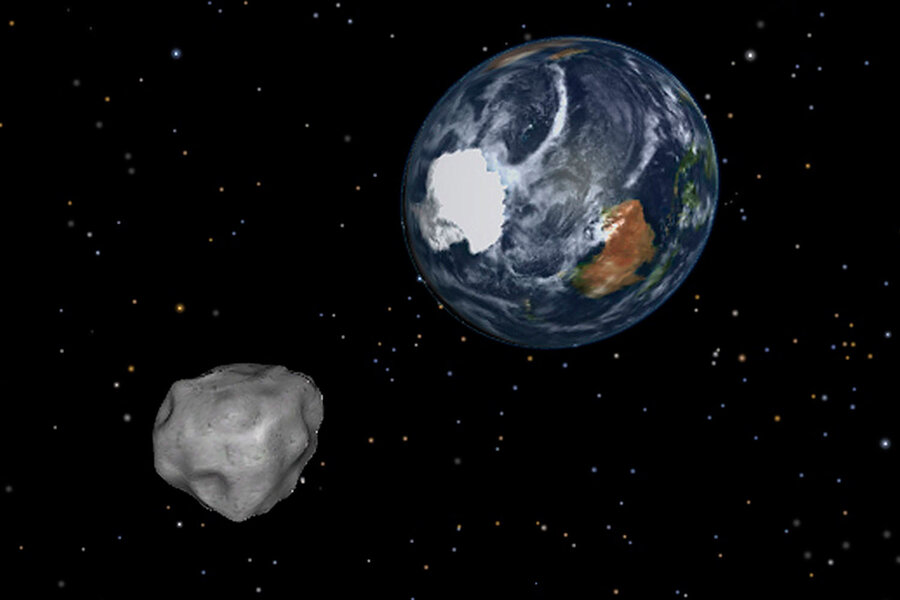NASA creates Planetary Defense Coordination Office. Why now?
If an asteroid comes too close to Earth, NASA will be ready.
That is the goal of the Planetary Defense Coordination Office, a new program designed to enhance NASA's asteroid-tracking abilities and coordinate a multi-pronged response if any objects fly too close to the Earth, CNN reported.
The preparations for Armageddon-style asteroid collision answer calls by scientists who are discovering the volume of asteroids, comets, and space junk that they say potentially threatens our planet.
It will be a costly operation. NASA's program for tracking asteroids and other objects in near-space ran on $4 million in 2010, but it received $20.4 million in 2012, and the budget doubled to $40 million in 2014, according to a NASA statement. The 2016 US budget provides $50 million to set up a Planetary Defense Coordination Office.
Why spend so much protecting the planet from something NASA does not believe will happen in the foreseeable future? Collision-course concerns are a matter of scale, not likelihood, scientists say.
"There is a growing choir of concern regarding Near Earth Objects, or NEOs – spotting them and dealing with any Earth-threatening gatecrashers," Leonard David wrote for Space.com. "While the annual probability of the Earth being struck by a huge asteroid or comet is small, the consequences of such a collision are so calamitous that it is prudent to appraise the nature of the threat and prepare to deal with it, experts say."
A planetary defense system gives NASA a ready answer for the next time news reports of too-close asteroids alarm the populace.
"While there are no known impact threats at this time, the 2013 Chelyabinsk super-fireball and the recent 'Halloween Asteroid' close approach remind us of why we need to remain vigilant and keep our eyes to the sky," John Grunsfeld, an administrator for for Washington-based NASA Science Mission Directorate, said in a NASA report.
The office is a long time in coming, as Congress established a committee to study the issue in 2010, the same year the White House mentioned tracking of "near-Earth objects" in its National Space Policy. Since then, both parties as well as Congress and the White House have given space exploration more priority. The tracking of potentially hazardous objects in near-Earth space, an area where NASA already shines, could provide low-hanging fruit for progress.
"The formal establishment of the Planetary Defense Coordination Office makes it evident that the agency is committed to perform a leadership role in national and international efforts for detection of these natural impact hazards, and to be engaged in planning if there is a need for planetary defense," Lindley Johnson, the new lead program executive (the title is "Planetary Defense Officer") for the office, said in a NASA statement.
Last year, Congress passed the SPACE Act, which represented a crystallization of regulations for asteroid mining by American companies. It offers American industries that have the will and technology a chance to demonstrate industrial leadership in space. Any private spaceships that eventually try and explore the resources of the rocks in near-space could benefit from NASA's enhanced asteroid-tracking ability as well.






